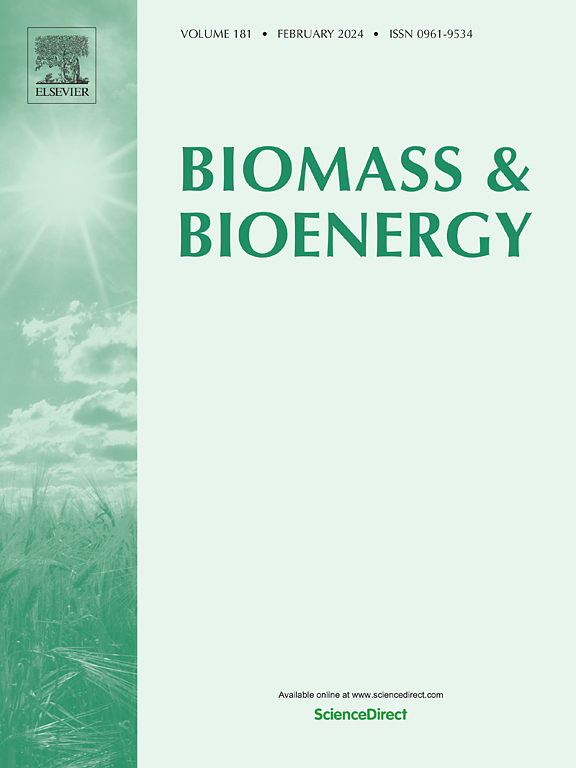对基于太阳能、生物质能、SOFC、微型涡轮机和锂溴/水吸收冷却器的拟议冷热电三联供系统进行能源、放能、环境和经济评估
IF 5.8
2区 生物学
Q1 AGRICULTURAL ENGINEERING
引用次数: 0
摘要
作为这项研究的一部分,我们开发了一种使用生物质燃料的基于固体氧化物燃料电池的冷热电三联供系统。该系统包括一个太阳能集热器子系统和一个向下气化器,用于预热气化剂,将生物质转化为燃料电池的合成气,并预热气化器中使用的空气。该系统进行了能量、放能、环境和经济研究。研究结果表明,预热进入气化器的空气可增加合成气中的 CO 和 H2 含量,同时减少 CO2 含量。对系统进行的放能分析表明,气化炉、燃料电池和气化器占总放能损失的 47.83%。仅燃料电池就造成了系统内 17.66% 的能量损失。环境分析得出的结论是,与类似的发电和电力热力生产系统相比,拟议的冷热电三联供系统具有较低的二氧化碳气体排放量和更高的效率。因此,所提出的系统与环境高度兼容。研究发现,燃料电池的成本占系统总成本的 50.07%。根据该系统 6.2 年的投资回收期,拟议系统的净现值在 7 年后有所增加,在系统寿命结束时(即 10 年)达到 35.7 万欧元。本文章由计算机程序翻译,如有差异,请以英文原文为准。
Energy, exergy, environmental, and economic evaluations of a proposed CCHP system based on solar, biomass, SOFC, micro-turbine, and LiBr/water absorption chiller
A solid oxide fuel cell-based CCHP system that uses biomass fuel has been developed as part of this research. The system includes a solar collector subsystem and a downward gasifier that preheats the gasification agent to convert biomass into synthesis gas for the fuel cell and to preheat the air used in the gasifier. The system underwent energy, exergy, environmental, and economic studies. The results showed that preheating the air entering the gasifier increases the amount of CO and H2 in the synthesis gas while decreasing the amount of CO2. An exergy analysis of the system revealed that the gasifier, fuel cell, and gasifier accounted for 47.83 % of the total exergy loss. The fuel cell alone contributed to 17.66 % of the exergy destruction within the system. The environmental analysis concluded that the proposed CCHP system has low CO2 gas emissions and higher efficiencies than similar power generation and power and heat production systems. Therefore, the presented system is highly compatible with the environment. The study found that the cost of the fuel cell accounted for 50.07 % of the overall cost of the system. The NPV of the proposed system increased after 7 years based on the system's payback period of 6.2 years and amounted to 357,000 € at the end of the system's lifespan, which is 10 years.
求助全文
通过发布文献求助,成功后即可免费获取论文全文。
去求助
来源期刊

Biomass & Bioenergy
工程技术-能源与燃料
CiteScore
11.50
自引率
3.30%
发文量
258
审稿时长
60 days
期刊介绍:
Biomass & Bioenergy is an international journal publishing original research papers and short communications, review articles and case studies on biological resources, chemical and biological processes, and biomass products for new renewable sources of energy and materials.
The scope of the journal extends to the environmental, management and economic aspects of biomass and bioenergy.
Key areas covered by the journal:
• Biomass: sources, energy crop production processes, genetic improvements, composition. Please note that research on these biomass subjects must be linked directly to bioenergy generation.
• Biological Residues: residues/rests from agricultural production, forestry and plantations (palm, sugar etc), processing industries, and municipal sources (MSW). Papers on the use of biomass residues through innovative processes/technological novelty and/or consideration of feedstock/system sustainability (or unsustainability) are welcomed. However waste treatment processes and pollution control or mitigation which are only tangentially related to bioenergy are not in the scope of the journal, as they are more suited to publications in the environmental arena. Papers that describe conventional waste streams (ie well described in existing literature) that do not empirically address ''new'' added value from the process are not suitable for submission to the journal.
• Bioenergy Processes: fermentations, thermochemical conversions, liquid and gaseous fuels, and petrochemical substitutes
• Bioenergy Utilization: direct combustion, gasification, electricity production, chemical processes, and by-product remediation
• Biomass and the Environment: carbon cycle, the net energy efficiency of bioenergy systems, assessment of sustainability, and biodiversity issues.
 求助内容:
求助内容: 应助结果提醒方式:
应助结果提醒方式:


